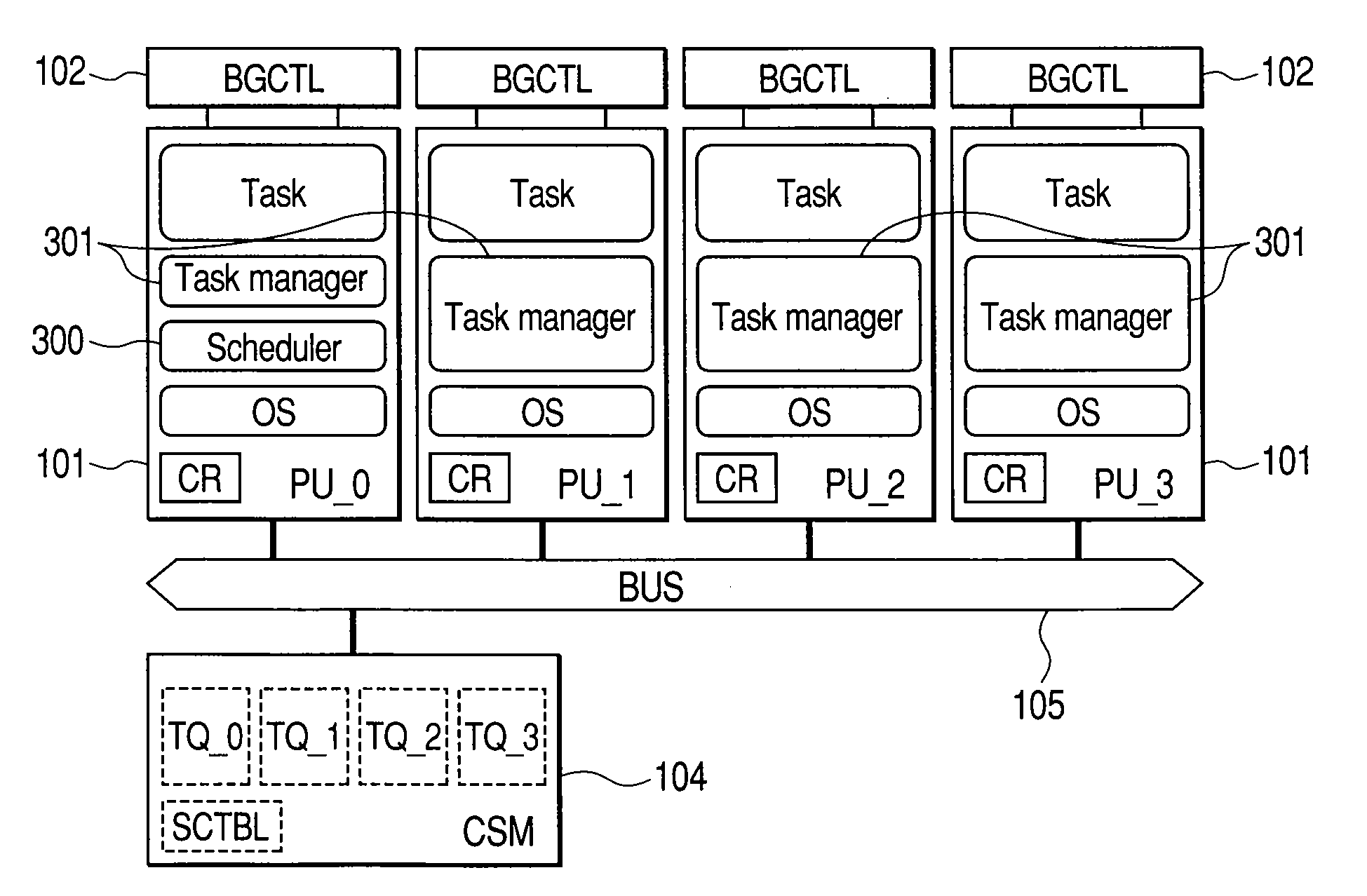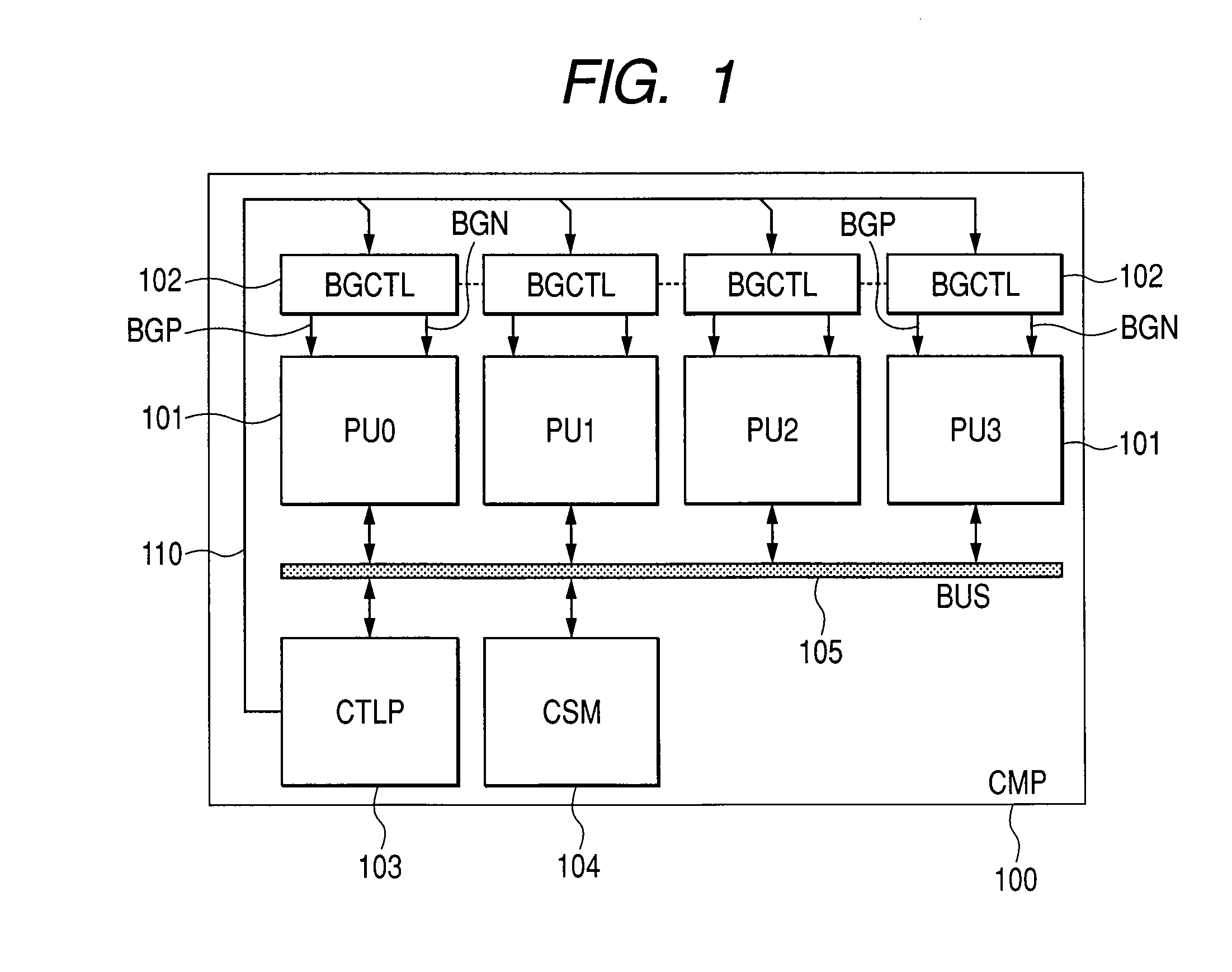Multiprocessor system
a multi-processor and processor technology, applied in the direction of multi-programming arrangements, generating/distributing signals, pulse techniques, etc., to achieve the effect of improving the performance of the subject processor system, maximizing the utilization of plural processor units (pu) and improving the performance of the processor
- Summary
- Abstract
- Description
- Claims
- Application Information
AI Technical Summary
Benefits of technology
Problems solved by technology
Method used
Image
Examples
Embodiment Construction
1. Brief Description of an Embodiment
[0032]At first, there will be described briefly a typical embodiment of the present invention disclosed in this specification. Each reference numeral in parentheses in the accompanying drawings just denotes what is included in the concept of the subject component.[0033][1] The multiprocessor system includes plural processor units (101) that can operate in parallel, a body-bias control circuit (102), and a control processor unit (103). Each of the processor units (101) includes an internal circuit composed of silicon-on-insulator structured SOI / MOS transistors, each of which includes a back gate isolated from other MOS transistors electrically. The processor units (101) are synchronized with a clock signal in operation respectively. The body-bias control circuit (102) outputs a body-bias voltage to the back gate of each SOI / MOS transistor in the internal circuit. The control processor unit (103) makes task scheduling by taking consideration to the...
PUM
 Login to View More
Login to View More Abstract
Description
Claims
Application Information
 Login to View More
Login to View More - R&D
- Intellectual Property
- Life Sciences
- Materials
- Tech Scout
- Unparalleled Data Quality
- Higher Quality Content
- 60% Fewer Hallucinations
Browse by: Latest US Patents, China's latest patents, Technical Efficacy Thesaurus, Application Domain, Technology Topic, Popular Technical Reports.
© 2025 PatSnap. All rights reserved.Legal|Privacy policy|Modern Slavery Act Transparency Statement|Sitemap|About US| Contact US: help@patsnap.com



